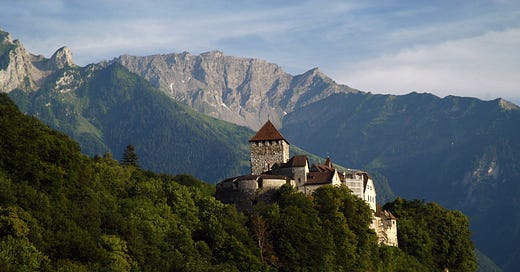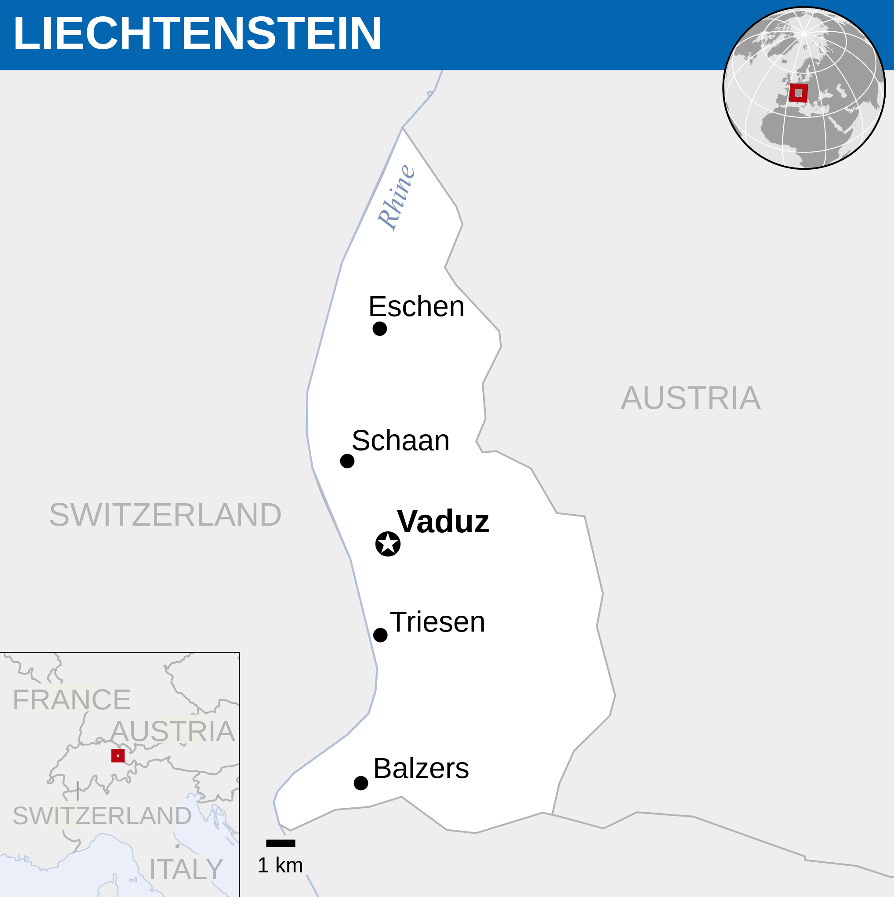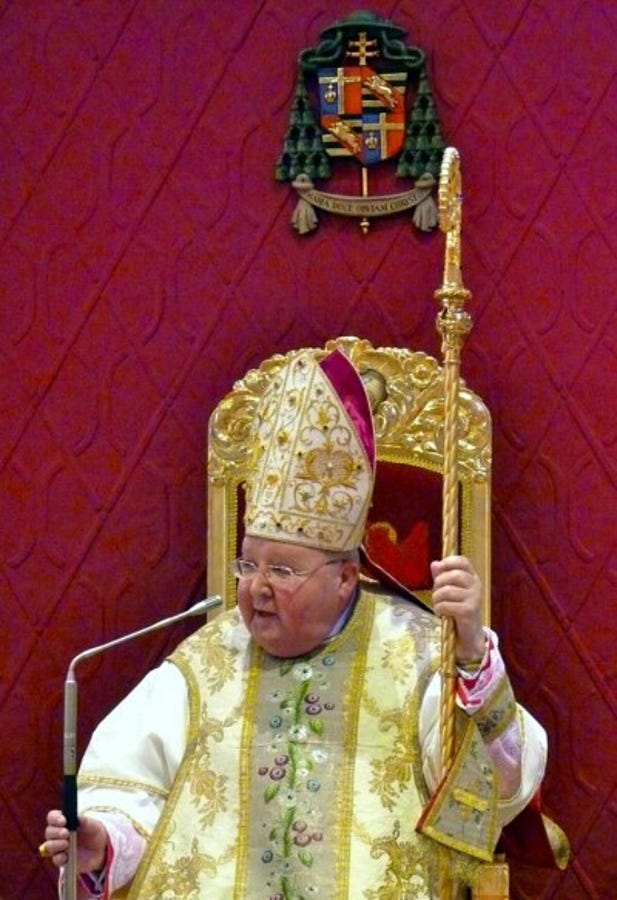
In Liechtenstein, a country smaller than Washington, D.C., the Catholic Church is going through a moment of serious upheaval - with real questions about whether or not its entire structure might be folded back into the Swiss diocese to which it once belonged.
The local archdiocese has been embroiled in controversy over the global synodal process, Church-state relations, and clerical abuse allegations.
Those topics are relevant to the entire Church — That’s why it’s worth digging into what’s happening in Liechtenstein.
A singular nation
Many people have heard of Liechtenstein, but perhaps only a small percentage could place it on a world map. The German-speaking country, officially known as the Principality of Liechtenstein and founded in 1719, covers just 62 square miles and has a population of around 38,000 people, 73% of whom are Catholic.
The wealthy tax haven has the distinction of being “doubly landlocked,” meaning that its neighboring countries, Switzerland and Austria, are also landlocked. (The only other doubly landlocked country: Uzbekistan.)
Liechtenstein is a constitutional monarchy ruled by Prince Hans-Adam II since 1989. His residence is Vaduz Castle, overlooking the capital city of Vaduz.
A single Catholic archdiocese covers the whole country. The Archdiocese of Vaduz was only founded in 1997 — and its origins are unusual.
Enter Archbishop Haas
Back in 1988, Liechtenstein was part of the Swiss Diocese of Chur. In that year, Pope John Paul II appointed Fr. Wolfgang Haas, a tradition-minded local priest, as coadjutor bishop of the diocese, with the right of succession when the office-holder died or retired.
But that appointment did not follow the local custom — confirmed by Pope Pius XII in the 1948 decree Etsi salva — in which the cathedral chapter of priests selected the bishop from three names proposed by the Holy See.
When Haas took over leadership of the diocese in 1990, he was reportedly forced to enter the cathedral through a back door for his installation ceremony, because the front entrance was blocked by protesters.
Haas also faced opposition in office, with an auxiliary bishop of Chur saying in 1996 - publicly - that a new start for the diocese was impossible “until we have a change in bishop.”
The Vatican decided in 1997 to solve the problem creatively: It separated Liechtenstein from the Diocese of Chur, raising it to the status of an archdiocese, and naming Haas (who was born in Vaduz) as its head. The Archdiocese of Vaduz was independent of any bishops’ conference and immediately subject to the Holy See.
The transition was bumpy. More than 8,000 of the country’s Catholics signed a petition to Liechtenstein’s parliament calling for the Alpine principality to remain part of the Chur diocese. The signatories would have included progressive Catholics uneasy with Haas’ conservative reputation and not wishing to be cut off from a diocese with strong liberal currents.
Liechtenstein’s parliament voted 24-1 to adopt a declaration saying that “the establishment of an Archdiocese of Vaduz without the participation and consent of Parliament and the people is undesirable.” But the change went ahead.
According to 2020 figures, the archdiocese serves around 28,000 Catholics, with 33 priests and 63 male and female religious in 10 parishes. It has been described as “a hotspot for traditionalists” from German-speaking countries.
Saying no to the synodal process
Haas made global headlines last year when he announced that his archdiocese would not take part in the global synodal process launched by Pope Francis.
“I am of the opinion that in our small archdiocese, it is possible for good reasons to refrain from carrying out such a complex and sometimes even complicated procedure, which in our parts runs the risk of becoming ideological,” he said.
He insisted that the archdiocese already had good communication channels.
“Those who wish to express in writing their wishes, concerns, and suggestions for the shaping of ecclesial life in our diocese can still do so by contacting the archbishop or the vicar general’s office directly,” he said.
Catholics belonging to the Association for an Open Church, a local group founded in 1998, decided to hold their own synodal sessions. Bruno Fluder, one of the organizers, summed up the results by saying: “The synodal process has shown that there is a very lively Church in Liechtenstein — unfortunately there is too little or almost no place for it on the part of the official Church.”
Haas received a report on the discussions, which he dismissed last month as motivated by Church politics. The archbishop suggested that the majority of Catholics in Liechtenstein had little interest in the topics raised by the Association for an Open Church.

Church-state tensions
The country’s constitution says that the Catholic Church “is the State Church and as such enjoys the full protection of the State.” Other religious communities are entitled to practice their faiths “to the extent consistent with morality and public order.” Church and state are entwined through funding and cooperation in education.
In the early 21st century, the government proposed to “disentangle” the church-state relationship. But proposals set out in 2011 were strongly opposed by Haas and other Church figures. Vaduz vicar general Fr. Markus Walser said at the time that the reform package, restricting state subsidies and ending the Church’s guaranteed role in schools, was “totally unconvincing.”
The debate continues to bubble away. In 2019, Prince Alois, the heir apparent to the throne - who is responsible for day-to-day governmental decisions - called for more church-state separation. The prince explained that this would ideally include constitutional amendments, a law on religion, agreements with the country’s largest religious groups, and a concordat with the Holy See. But he said that changes were being held up by ongoing discussions about Church property.
Abuse allegations
The Archdiocese of Vaduz is also in the headlines over its handling of abuse allegations. They concern a cleric who was reportedly refused ordination in the German Diocese of Limburg (led by the German bishops’ conference president Bishop Georg Bätzing.) The priest was ordained by Archbishop Haas in 2006 for the Vaduz archdiocese.
Media report that the priest — who maintains his innocence — has faced a series of accusations, including one of sexual assault in October 2019 (investigated but later dropped by the public prosecutor’s office). Haas removed the priest from pastoral work in February 2020. The parents of the alleged victim accused the Church of being slow to respond.
The archdiocese expressed “deep pain and regret” at the situation in 2020, but underlined that it had followed all necessary procedures. Proceedings against the priest are reportedly ongoing, with Church media underlining that the presumption of innocence applies.
What’s next?
On Aug. 7, 2023, Haas will turn 75, the age at which diocesan bishops must tender their resignation to the pope. It will be interesting to see how quickly the archbishop’s resignation is accepted - and what it will bode for the future of the Church in Liechtenstein.
The archbishop’s critics hope the Vatican will decide to reunite the Vaduz archdiocese with either the neighboring Swiss dioceses of Chur or St. Gallen, or the adjacent Austrian diocese of Feldkirch.
Whether Liechtenstein gets a second archbishop will depend on how the pope views Haas’ tenure — and could be a referendum on participation in the synod on synodality.
While the Vaduz archdiocese is unlikely to be one of Pope Francis’ top concerns, word about its decision to opt out of the synodal process will probably have gotten back to the pontiff.













This was a very interesting and fascinating article. Enjoyed it very much!
These European articles are very interesting